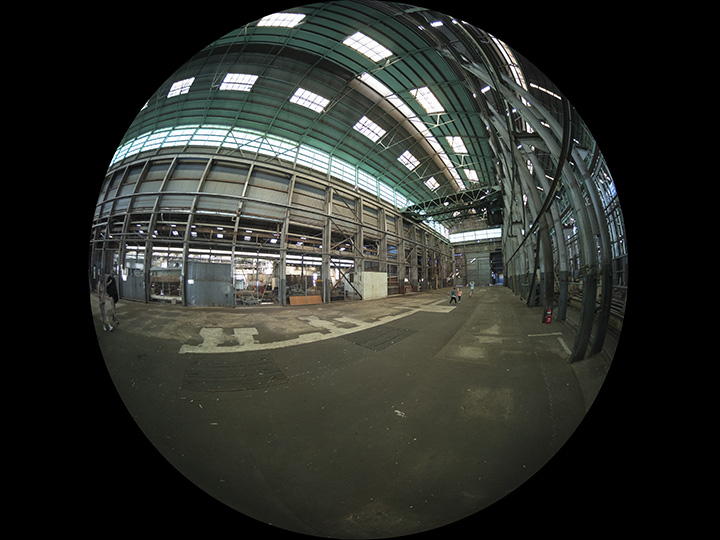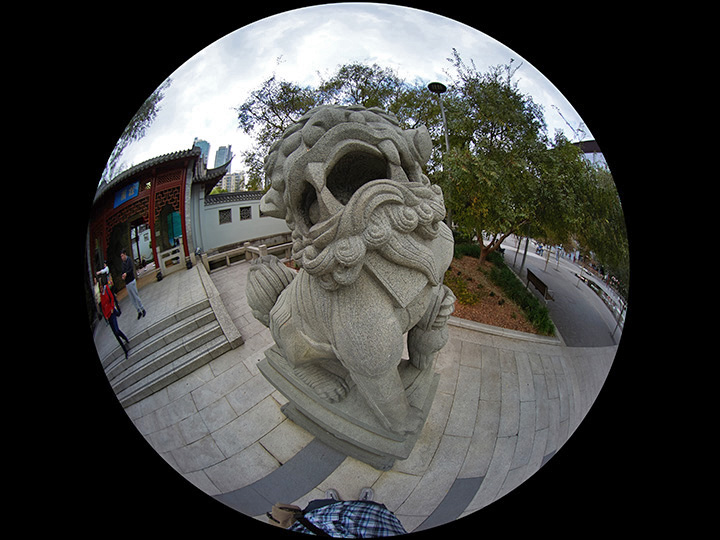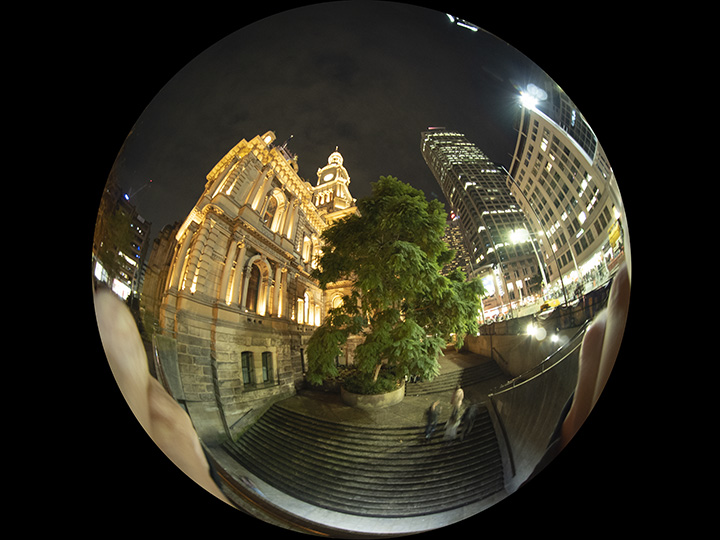|
Laowa 4mm f/2.8 Circular Fisheye - Review / Test Report - Analysis |
|
Lens Reviews -
(Micro-)Four-Thirds
|
|
Page 2 of 3

Is it truly a circular fisheye lens?
Yesno. In terms of optical design, it is but it has one bug - its image circle is slightly bigger than the MFT image frame resulting in slight cropping at the top and bottom of the image. If it is a requirement for you to have a flawless circle out-of-the-box, this will be a showstopper.
 However, if you have minimum skills in post-processing images, it's really not that hard to correct this really. Most popular imaging tools (Photoshop, even Paint.NET) offer an elliptical marquee tool that you can easily use to fix the issue. In Photoshop you can even create an action for this to automate the procedure. By doing so you also crop the bluish fringes at the edge as well as freak reflections that made it beyond the image circle into the black part of the image frame. Below is the sample image from above but with the procedure applied. If you'd like to go the extra mile you could also soften the transition from black to the actual image zone a bit for making it less harsh.
Note: The bluish zone is in fact pretty common. The Canon EF 8-15mm f/4 USM L Fisheye shows it as well.
However, if you have minimum skills in post-processing images, it's really not that hard to correct this really. Most popular imaging tools (Photoshop, even Paint.NET) offer an elliptical marquee tool that you can easily use to fix the issue. In Photoshop you can even create an action for this to automate the procedure. By doing so you also crop the bluish fringes at the edge as well as freak reflections that made it beyond the image circle into the black part of the image frame. Below is the sample image from above but with the procedure applied. If you'd like to go the extra mile you could also soften the transition from black to the actual image zone a bit for making it less harsh.
Note: The bluish zone is in fact pretty common. The Canon EF 8-15mm f/4 USM L Fisheye shows it as well.

Crazy Shit happens ... a lot ...
While it is, of course, a feature to have that much field-of-view at hand, it is also downright painful for at least two reasons.
Reason 1: Even if you don't want to, your body parts will often make it into the image. I've to admit that my belly isn't that small but even if you are slim, you will have your feet (or your tripod legs) ending up in the image fairly often.
 Reason 2: and that's really the worse aspect, you can't really use your camera grip. I've used the Olympus E-M5 II for this review - a camera with a very small grip. When using the grip, my hand was in the image frame! Or in other words - you'll look a bit silly to others because you have to hold the camera at the top & bottom plate ... as well as far away from your body. Honestly, I'm not sure whether the extreme field of view is an issue on MFT cameras with a deep grip (e.g. the Panasonic G9) where the grip itself may already be in the image field (but keep in mind that you'll usually crop your image anyway)!
Reason 2: and that's really the worse aspect, you can't really use your camera grip. I've used the Olympus E-M5 II for this review - a camera with a very small grip. When using the grip, my hand was in the image frame! Or in other words - you'll look a bit silly to others because you have to hold the camera at the top & bottom plate ... as well as far away from your body. Honestly, I'm not sure whether the extreme field of view is an issue on MFT cameras with a deep grip (e.g. the Panasonic G9) where the grip itself may already be in the image field (but keep in mind that you'll usually crop your image anyway)!
 Keeping all that in mind, let's head to the more formal aspects.
Keeping all that in mind, let's head to the more formal aspects.
Distortions
Are you kidding me? ;-)
Vignetting
Yeah, right ...
MTF (resolution)
It's quite a nightmare to test the resolution of a full-frame fisheye and the setup problems increase dramatically with a circular fisheye lens. Thus please consider the following results as experimental.
Surprisingly the resolution is actually quite impressive. The image center is tack sharp at f/2.8 already and the image borders are pretty good as well. The corners aren't great at this setting but it's not bad either. Stopping down lifts the corner quality and the quality is very good around the f/5.6 mark. There is, of course, a further drop in resolution on the last couple of pixels near the black zone.
Please note that the MTF results are not directly comparable across the different systems!
Below is a simplified summary of the formal findings. The chart shows line widths per picture height (LW/PH) which can be taken as a measure for sharpness.
If you want to know more about the MTF50 figures you may check out the corresponding Imatest Explanations

Chromatic Aberrations (CAs)
Chromatic aberrations are a bit on the high side albeit that's hardly surprising. An average CA pixel-width of 1.8px is visible in the "borders". This is visible albeit not terrible. However, if you plan to "de-fish" your images (more on this later) you should correct the issue beforehand - most modern RAW converters can do that for you these days.

Flare
So yes, it does flare a lot when placing the sun or other strong light-sources near the edges. Glare can also be an issue when having extreme contrast transitions.

|